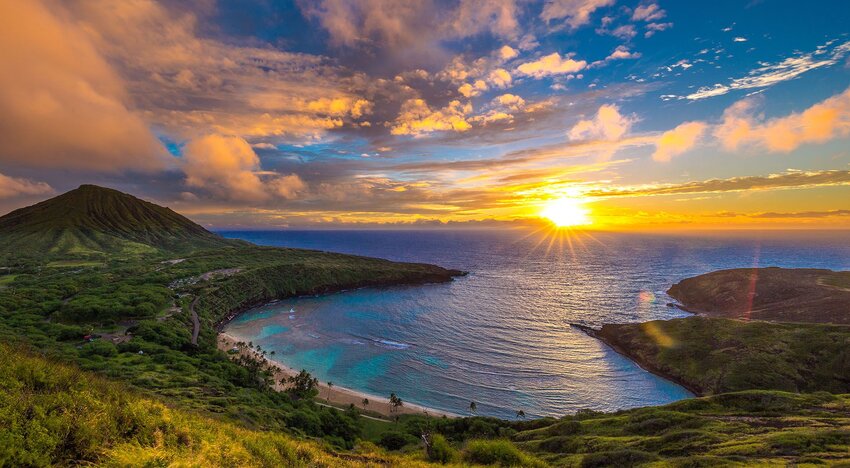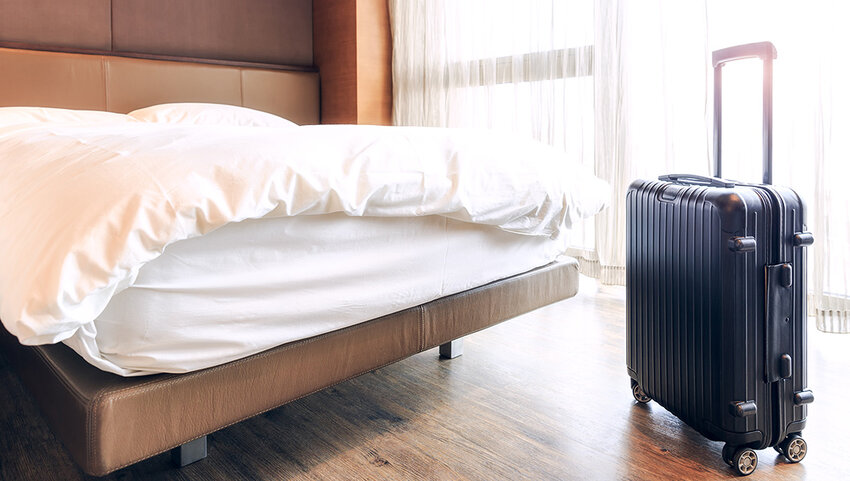In addition to 137 islands, islets, and atolls, the archipelago of Hawaii is also home to eight major islands, six of which are open to tourists. Although it’s hard to go wrong on a trip to Hawaii, each island is so unique, it’s best to do your homework ahead of time. To help you out, we’ve taken into account the cost of accommodations, variety of attractions, crowd levels, and general island vibes, to rank every Hawaiian island open to tourists.
6. Molokai

Sixth on our list is Molokai, the least visited and least developed of the Hawaiian Islands. A reminder of what Hawaii used to look like before mass tourism, Molokai is undeniably beautiful. However, as a distinctly local island, Molokai doesn’t offer much to tourists compared to the rest of the state. The island is rugged and rural — island maps reveal little information and Molokai is completely devoid of traffic lights. Still, the island is a great option for those who really want to get off the beaten path and discover some rugged adventures. Canoeing, fishing, whale watching, and even golf courses are all available on the island. Located on the island’s east shore, Halawa Beach is a popular day trip, consisting of two bays ideal for swimming, picnicking, and surfing. Visitors who want to make the trek to the outer island should book accommodations at Hotel Molokai which offers access to the island’s main attractions.
5. Lanai

As the smallest inhabited Hawaiian Island, Lanai is also the only island that is privately owned. Billionaire Larry Ellison bought 98% of the island in 2012 with the intention of turning Lanai into a high-end wellness destination. Nearly 10 years later, Lanai is well on its way to being the tranquil tourist community envisioned by Ellison, with several five-star resorts and two golf courses. Away from the high-end accommodations, Lanai still provides plenty of adventure — if you’re going to make the drive to Hulopoe Bay to watch the spinner dolphins, an off-road vehicle is recommended for island travel. It’s also helpful to know that Lanai is drier and slightly cooler than the other islands, with high temps hovering in the mid-70s year-round. Although lack of rain may be an advantage, the cost of staying on the island makes it less attainable for the average traveler.
4. Oahu

In contrast to the serenity found on Molokai and Lanai, Oahu is a bustling island frequented by visitors year-round. Home to Honolulu, Hawaii’s capital and biggest city, Oahu is the island to visit if you don’t mind larger crowds. On the plus side, it’s the most affordable island for travelers, making it more accessible to tourists on a budget. Many visitors flock to Waikiki, a neighborhood in Honolulu that provides plenty of accommodations and smaller waves for beginner surfers. In contrast, the island’s North Shore is notorious for its big surf, making it a premier destination for the pros. In between these two coastlines, Oahu provides endless activities for travelers, including horseback riding, zip-lining through the jungle, and day hikes on Diamond Head. Since it’s also home to historic sites (like the Pearl Harbor National Memorial), and cultural activities (like luaus at the Polynesian Cultural Center), Oahu is sure to please a wide variety of travelers.
3. Hawaii

While its official name is Hawaii, this island is better known as “the Big Island.” The nickname is truly appropriate — as both the largest and youngest of the Hawaiian Islands, the Big Island offers visitors a glimpse into the vast biodiversity of the Hawaiian ecosystem. Home to Mauna Kea, an active volcano and the tallest mountain on Earth from base to summit, Hawaii is a dream vacation for the outdoorsy set. Between stargazing atop an active volcano, camping on black sand beaches, hiking through the rainforest, and snorkeling the coral shelf at Captain Cook, the Big Island is ideal for active travelers. On the flip side, if your idea of a Hawaiian vacation involves sipping Mai Tais in a lounge chair, this particular island might not be for you.
2. Maui

With its endless white-sand beaches and swaths of thick, jungle forest, Maui is easily one of the most recognizable — and popular — of the Hawaiian Islands. For many travelers, Maui is ranked at the top of the list, a must-see destination that offers a combination of amazing restaurants, fun shops, and some of the most beautiful scenery on Earth. In addition to the stunning beaches that make Maui beloved by many, the island supplies a wide array of thrilling activities, like surviving the hairpin turns on the Road to Hana, watching pods of humpback whales, and observing sharks at the Maui Ocean Center. However, all of these advantages translate into a few drawbacks — the coveted island is more expensive to visit and it’s often crowded during the busy season.
1. Kauai

From the minute your plane lands on Kauai, you’ll begin to understand why this Hawaiian Island surpasses all others. But Kauai’s “it factor” goes beyond the island’s tropical scenery and magnificent shoreline, and has much to do with its laid-back vibe. While the island’s location makes it slightly wetter than the rest of Hawaii, Kauai provides a consistent mix of sun and rain that frequently results in dramatic rainbows off the coastline. The precipitation also adds to the island’s greenery, providing a lush backdrop for some of the best hiking trails in Hawaii. Although Kauai maintains a delightful and somewhat quirky local vibe, it’s still home to a few big-name resorts, if that’s the type of vacation you’re looking for. Either way, the island’s beauty and pace of life will make you forget your troubles, which is the stuff that great vacations are made of.
Main photo by Shane Myers Photography/Shutterstock.





